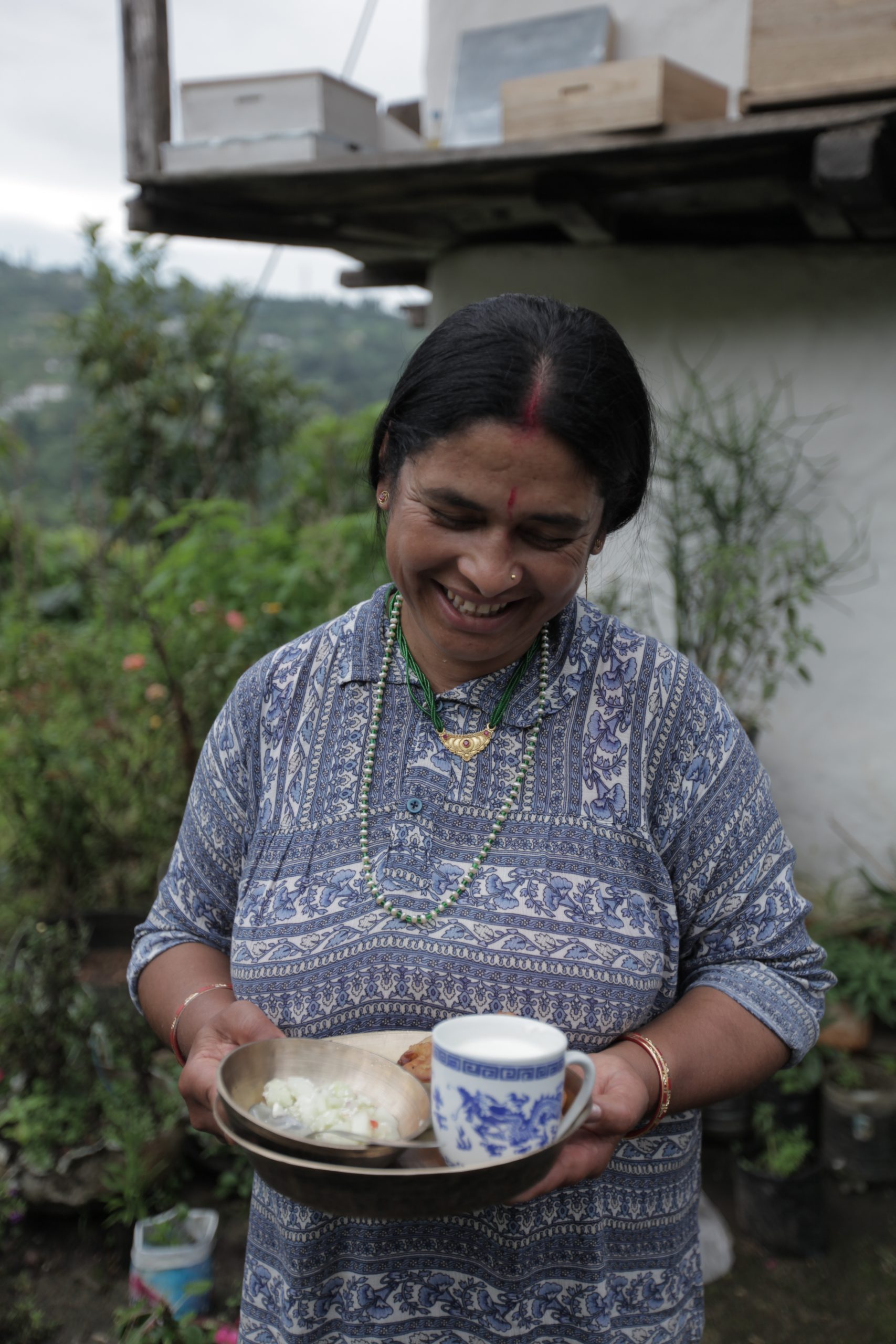
We found ourselves meandering through the mountain roads and entering Tsirang during a project to with WWF Bhutan. The team took us to meet local community forestry members to help us understand the program better. It was sheer luck that one of the members lived in one of my favourite parts of the country.

Tsirang, for me, will always be Bhutan’s hill station town. The image of cool summer mist settling on the hills has stayed with me for a while. If you’re looking for beautiful sunsets, this is the place to be. There are several beautiful sunset points on the way to Sarpang from Tsirang.
We met Kishore Chapagai after a delicious lunch at a Lhotsam (southern Bhutanese) restaurant in Tsirang town. He is the chairperson of Menchuna Kikhorthang CF. “Like Kishore Kumar?” I said in jest. “I don’t mind if you call me that, ” he replied laughing.
The project they have here is an interesting one: making brooms from the Thysanolaena maxima grass plants. “It is an integrated type of farming,” says Kishore. “People can earn an income from selling the brooms. These plants also help with land preservation as the roots prevent soil erosion. The stem waste of these plants also work as firewood. It is very beneficial.”
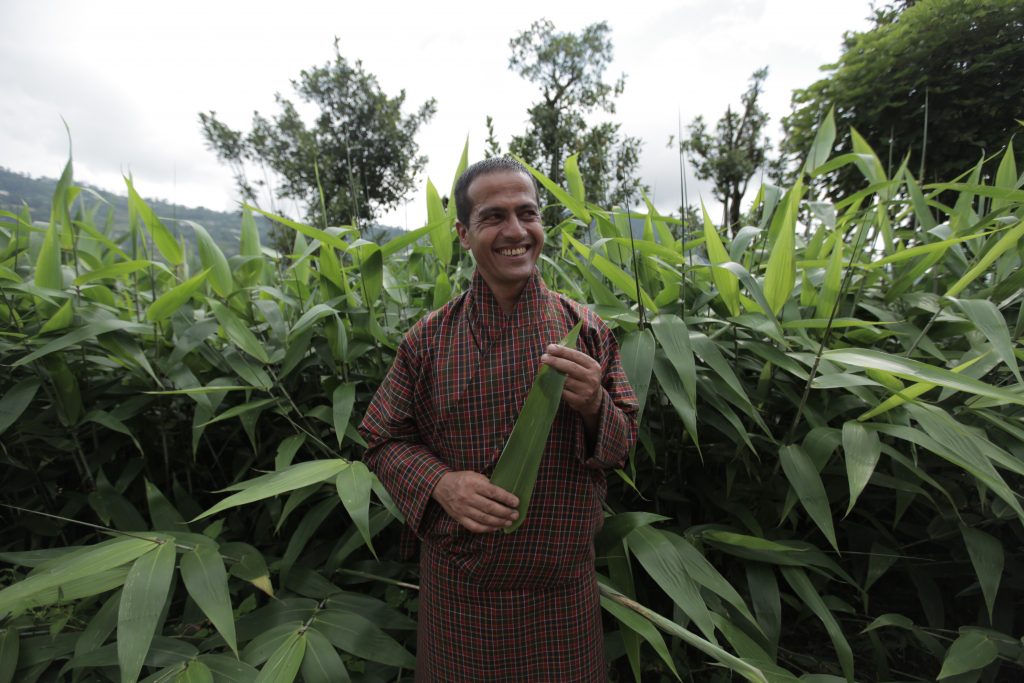
Harvesting Broom Grass Plants
Kucho, as it is called in Lhotsam kha, is harvested in the winter months. Kishore says it has greatly helped the local economy earn a steady income with sales across the border as well. But things did slow down during the pandemic, and other growing challenges also pose a threat to its cultivation. ” This plant is supposed to last for 15 years. With climate change and infertile land, it may not even see a decade”, says Kishore. He points at the vast lines of plantations below the roads on the slopes of his village. “We’re already seeing a decline in production”.
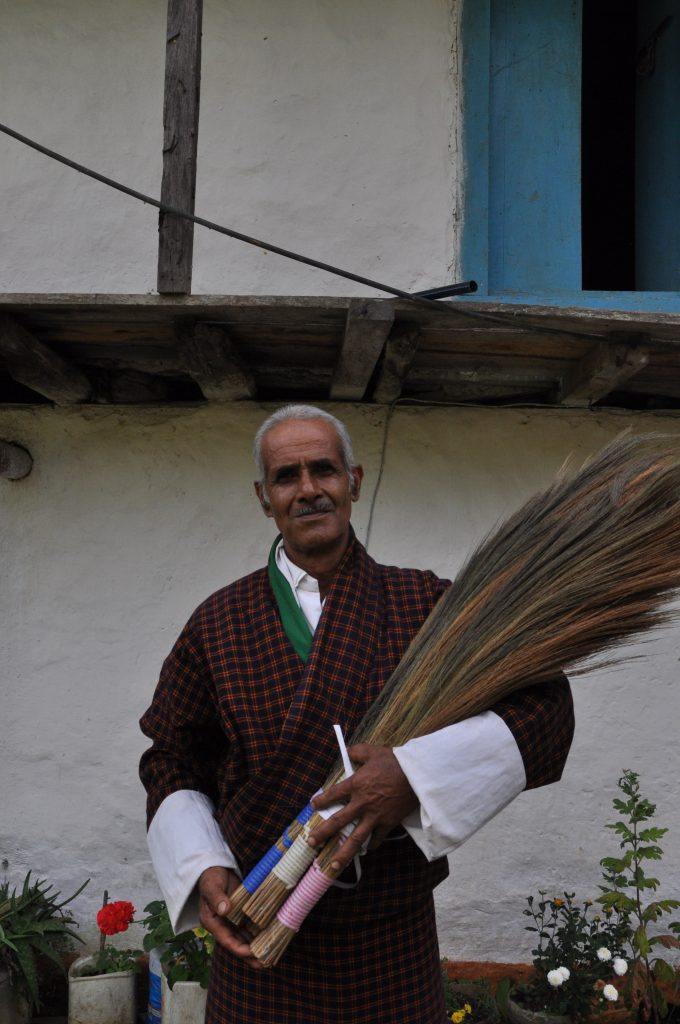
There’s also something interesting about these plants. They look like they have human teeth marks on them. The next time you come across a broom grass plant, look carefully at these marks on the leaves. “Don’t they look like teeth marks?” I said. Kishore told me that according to local customs, a leaf of the plant is used in shamanistic rituals. During cleansing rituals, Shamans would trap the evil witches in the leaf to dispel their evil power. Hence all that would be left were the witches’ teeth marks. Our videographer had an interesting rendition of the belief that he heard growing up. Apparently when one of the gods fell he clenched on the leaf with his teeth. “Hence the teeth marks!” he said.
Lhotsham Hospitality in Tsirang
As Kishore led us to his beautiful home, I thought of one thing. A Lhotsampa (southern Bhutanese) homestay. I’ve spent a lot of time covering homestays in the rest of the country. But I’ve never stayed at a Lhotsham home, and it is definitely something on my bucket list.
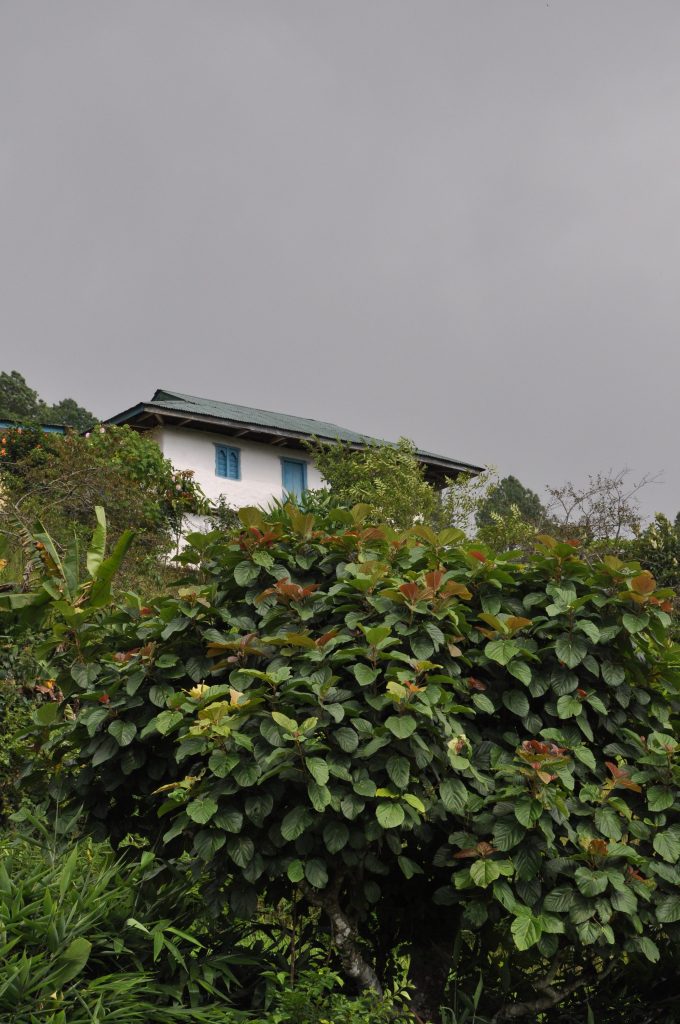
Kishore expressed interest in transforming his old mother’s house that he inherited into a homestay. The beautiful mud house embodies the traditional southern architecture. The sky blue colors on the windows and pillars tell a story. As if bringing together the colors of the sky and the earth into his house.
His wife greeted us with Shelroti, a cool fresh cucumber raita and a cup of fresh homemade curd. It was just what we craved on a hot day.
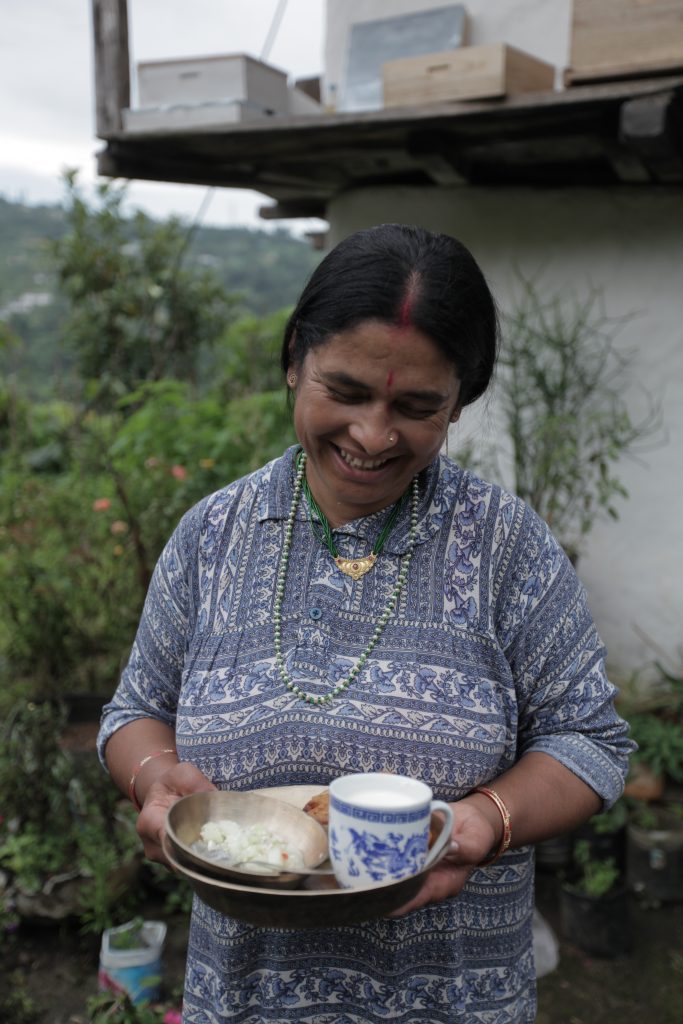
“Tsirang is beautiful in late autumn and winter. Our hills turn golden yellow with the rice fields and oranges.” Kishore tells me, noticing my interest in visiting his home again. Meanwhile I’ll pray I get to visit this beautiful piece of southern paradise in Bhutan again.
And hopefully by then Kishore would have his homestay ready.